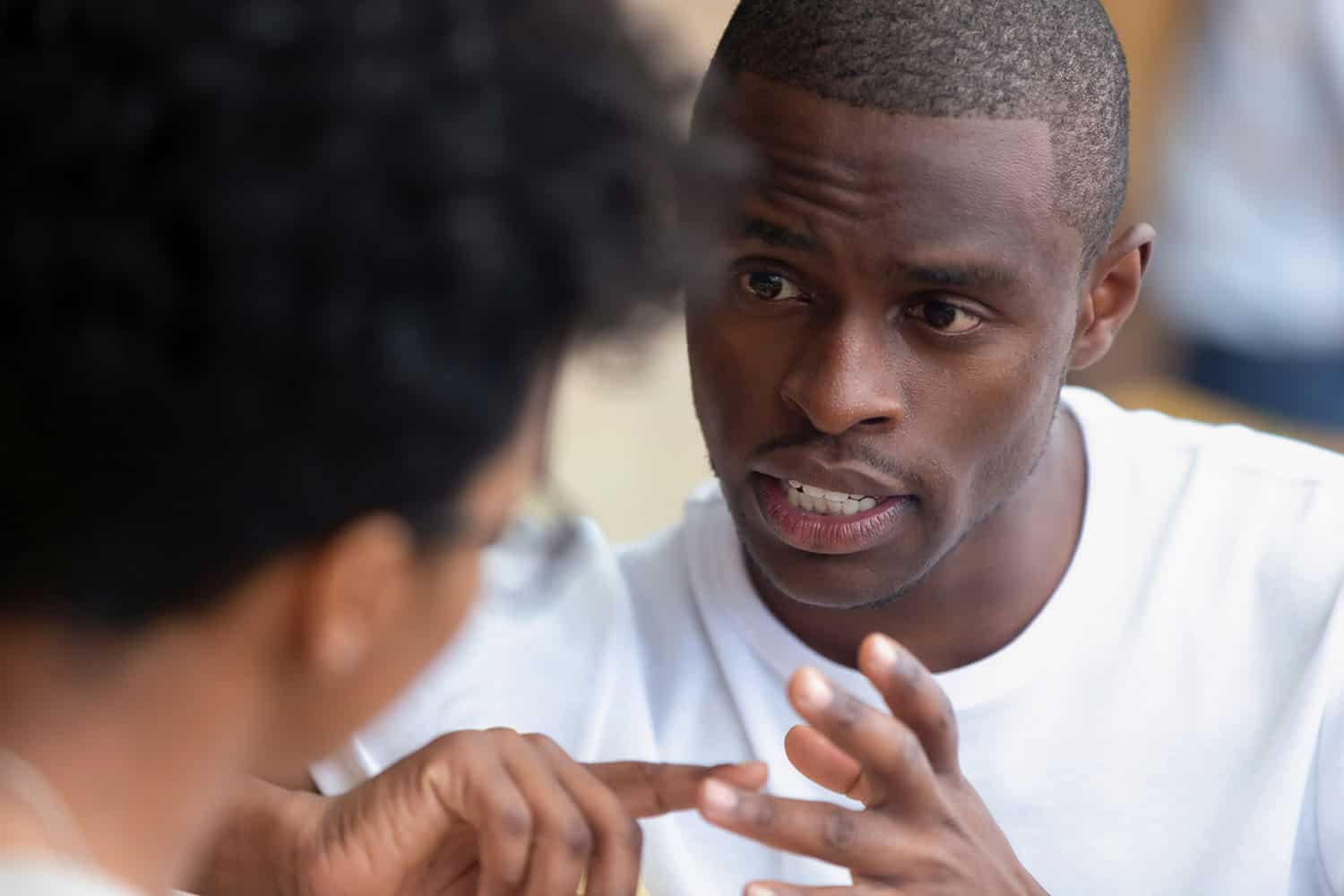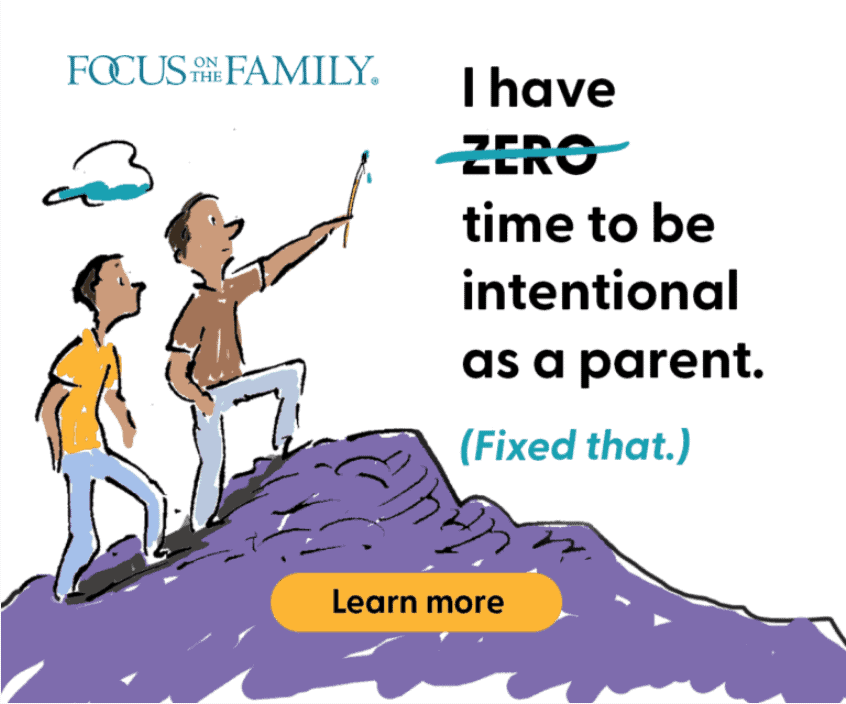In This Series:
- 1. How to Talk to Your Children About Homosexuality
- 2. Countering the Cultural Confusion: Your Questions Answered About Homosexuality
- 3. The Homosexual Community: Small Number, Powerful Influence
- 4. Reliable Resources for Teaching Children About Marriage, Sexuality and Homosexuality
For parents discussing homosexuality with their older children, here are answers to commonly asked questions. After each answer, we’ve added some ideas for discussion questions that you might use. In many cases, we’ve included links to outside articles and sources. Please note that many of these deal with sensitive and difficult issues and may contain content for mature readers. Referrals to resources not produced by Focus on the Family are for informational purposes and do not necessarily constitute an endorsement of all of a resource’s contents.
Question #1: How many people are homosexual?
Answer: For years the standard answer was “10 percent,” even though many who gave this answer knew it was an exaggeration. That number came from a statistic generated by Dr. Alfred Kinsey, who claimed that 10 percent of men had a homosexual encounter at some time in their lives. We now know that Kinsey’s research methods were biased, inaccurate, and included illegal and unethical activities.
In a 2011 Gallup poll, adults in the U.S. were asked to estimate the percentage of the population who were gay or lesbian; on average, they guessed 25 percent – a huge exaggeration as well. This perception probably comes from the high priority that media and other influential sources have placed on promoting homosexuality.
The real answer is: Nobody knows for sure. That’s because while it’s pretty easy to tell who is male or female, it’s harder to define or scientifically study an abstract idea such as “sexual orientation.” One very credible study asked people about their homosexual behavior, identity and desires, in the past and the present. Researchers found some people have same-sex attractions; however, they don’t identify as “gay” or “lesbian.” Others engage in sexual behaviors, but don’t have the attractions. And for some, there were differences between past and present identity, attractions and behaviors. Most surveys show these mixed results.
The 2015 National Health Interview Survey, from the U.S. Centers for Disease Control and Prevention, asked about sexual identity and found that 1.6 percent of adults identify as gay or lesbian, while 0.8 percent identify as bisexual. So 2.4 percent of U.S. adults, according to this study, self-identify as lesbian, gay or bisexual (LGB).
For more information, read Dig Deeper: Small Numbers, Big Influence.
Questions for older children and teens: Do you think it matters how many people self-identify as LGBT? How much of the U.S. identifies as Christian? Why do you think Christians are so under-represented and LGBT-identified people so over-represented in news and media? How does that impact our thinking on these issues? If LGBT-identified activists are such a small percentage of the population and have such a big impact, what kind of impact do you think Christians could have?
Question #2: Are people born gay‚ or do they choose to be gay?
Answer: The answer is more complicated than this “either/or” question allows. On the one hand, there is no scientific proof people are born homosexual. Since the 1980s, researchers have tried to find a biological cause for homosexuality, studying genes, brains, hormones, twins and more. They found no biological or genetic cause. In fact, twin studies provide strong evidence that the predominate things that lead to homosexuality have to do with post-birth factors. So homosexuality is not inborn or determined by genes. A professor from the university of Nebraska explains how genetics can be very misunderstood, and that there are no complicated, relational human behaviors that are “caused” by genes.
At the same time, most people do not overtly choose to have homosexual attractions, no more than anyone “chooses” to be attracted to brunettes or people with green eyes. Studies and individual testimonies demonstrate there are a variety of roads into homosexuality, and the specific route is different for each person. Homosexuality probably results from a combination of factors, including (but not limited to) personality, relationships, trauma, developmental issues and cultural influences. Some people with same-sex attractions are able to point to early childhood experiences or family dynamics that contributed to their feelings.
Choice becomes very important when a person is deciding how to handle same-sex attractions. Will they choose to seek the help of God and others to follow God’s design for human sexual expression? Will they seek healing, forgiveness and grace? Will they choose to place their confidence in and follow Jesus Christ? Those choices are significant, indeed, but they are the choices we all face.
For more information, you can read, Are People Really Born Gay? and God’s Design for Sexuality.
Questions for older children and teens: Does it matter what causes homosexuality or how it develops? If so, why? If we want to help people live according to God’s standards, how can we provide support for those with same-sex attractions?
Question #3: How does sexuality normally develop, and what can happen to disrupt this process?
Answer: Human sexuality is complicated and mysterious. We don’t know exactly how sexual attractions develop; however, scientists and researchers who’ve studied child development have some idea of what the process generally looks like and what happens when something disrupts that process.
Children start out life completely attached to mom. She is their source of life, nurture, security, care and identity. As a mother cares for her infant, the child develops a healthy sense of well-being and wholeness. Around the age of two, children begin separating themselves from their mothers and start developing their own sense of identity. Some people call this “the terrible twos,” but it’s actually a very necessary stage of development, where children separate from mom and “individuate,” developing a sense of themselves as distinct and unique individuals.
Some of this comes about through interaction with dad, who, being irreplaceably unique from mom, interacts with children differently. Children are also watching their parents’ relationship with one another, and how parents connect and relate to their other children. And they learn from their own relationships with siblings and other children. At this point, they have a growing sense of male-female differences.
Around the age of five or six, boys tend to want to play more with other boys. They enter that “rough-and-tumble” world where they learn to both compete and support each other. They are working to attain a sense of masculinity, which comes from other boys and men. Boys at this age will identify more and more with dad.
Girls usually want to play more with other girls at this stage, and the emphasis is less on competition and more on relationships. They are developing a sense of self, internalizing a sense of well-being and embracing their femininity. Girls at this stage need dad’s love, attention and approval. They are watching how he relates with them, mom, siblings and other girls and women.
Around the time puberty kicks in, with all its physiological, mental and emotional changes, this developmental trajectory suggests that boys have internalized enough of a sense of masculinity that they are attracted to girls because they are different and mysterious. In the same way, girls will have embraced a healthy sense of femininity and are attracted to boys because they are different. They are distinctly “other.”
While mom and dad set the stage for this development, the world around children plays a part, too. A culture that exposes children to adult sexuality, sexualizes women and men, and displays and promotes unhealthy, inappropriate relationships will certainly influence children. In a broken world, and because of sin in each of us, there are myriad ways that the healthy development of sexuality can be derailed.
For more information, check out: “Are Heterosexuals Born that Way?”; Understanding Female Homosexuality (video); Understanding Male Homosexuality (video); Understanding Male Homosexuality (booklet) and Secure Daughters, Confident Sons.
Questions for older children and teens: God created us to grow into a healthy sense of masculinity or femininity, but sin can derail or damage that growth. What are some specific things that could harm someone as they are growing into healthy adulthood and appropriate opposite-sex relating? How do you think God brings healing to people whose sexuality has been damaged or whose healthy development has been derailed?
Question #4: Can people turn from gay to straight?
Answer: First, let’s look at the idea of “being gay.” Over time, the definition of homosexuality has shifted from being a behavior to a condition to an identity. In the Bible, for example, the focus is on the behavior. Scripture says don’t engage in this activity.
As Christians, we don’t want to define people by their attractions or struggle. We should look beyond homosexuality to see a person as a sacred human being created in the image of God. “Being straight” or “being gay” may be the way the culture likes to label people; however, it’s not how God determines our identity or worth. God bases our worth on His unchanging, unfailing, eternal love for us.
Human feelings, actions and identity can change, however. God brings redemptive transformation to many areas of a person’s life, including our motives, thoughts, beliefs and identity, as well as our relationship with God, relationships with people, decisions and feelings. God uses many means to bring about change, including healthy relationships, counseling, Scripture, spiritual disciplines, the Holy Spirit, obedience and prayer. It may not be an easy road, but many people have moved away from homosexuality, some into biblical marriages and others into fulfilled chaste lives, all dedicated to serving Christ and others.
For more information, you can read, What Do We Mean When We Talk About Change? and Hope for Those Who Struggle. Numerous stories of healing and growth are available at Such Were Some of You.
Questions for older children and teens: Do you have an area of your life where God has helped you change? How does God bring transformation and healing to people? What can we do to cooperate with Him in that process? What would make sexual identity, behavior or attractions difficult to transform?
Question #5: Some people who claimed to be “ex-gay” have gone back into homosexuality. In fact, some say that no one really changes‚ is that true?
Answer: There are a number of ministries that help people with unwanted same-sex attractions. Yes, some people from those ministries, including some leaders, have gone back into homosexuality or have claimed that no one really changes. We find this very sad, and grieve over these decisions and statements.
The good news is, however, that many people do change and these stories of people going back don’t represent everyone who leaves homosexuality. This kind of transformation is mentioned in the Bible, as the apostle Paul specifically mentions individuals in the first century church who turned from sin, followed Christ and left homosexuality.
Or do you not know that the unrighteous will not inherit the kingdom of God? Do not be deceived: neither the sexually immoral, nor idolaters, nor adulterers, nor men who practice homosexuality, nor thieves, nor the greedy, nor drunkards, nor revilers, nor swindlers will inherit the kingdom of God. And such were some of you. But you were washed, you were sanctified, you were justified in the name of the Lord Jesus Christ and by the Spirit of our God. 2 Corinthians 6:9-11 (ESV)
For almost 2000 years, people have been leaving homosexuality through the redemptive power of Jesus Christ. In the past 50 years, church-based ministries have helped people with unwanted homosexuality with strong success. And, many of these ministry leaders and group members have been out of homosexuality for 20 years or more!
To find out more, check out: Resources for Men and Women with Unwanted Homosexuality, Restored Hope Network and Such Were Some of You.
Questions for older children and teens: Why do you think some people who pursue freedom from same-sex attractions later turn back and identify as gay? What do you see in the church and the world around us that helps or hinders people trying to live according to God’s design for sexuality? How have individuals with opposite-sex attractions been at following God’s plan for relationships, sexuality and marriage?
Question #6: How should Christians treat homosexual-identified men and women?
Answer: All humans are created in the image of God and, therefore, they reflect something of God’s infinite value and worth. Individuals are male or female, and those are important distinctions. A person’s identity involves more than their sexual attractions or behavior, so typically we will use terms like “men and women with same-sex attractions” or “LGB-identified individuals.”
LGB-identified people are not a separate race or species created by God. They are men and women who suffer confusion and struggle with sin with regard to their identity, attractions and behavior. All this is the result of being born into a sinful world where everyone struggles.
People should be treated with great respect and dignity. To do less is, in itself, a sin. Every individual is worthy of being loved, respected and protected. At the same time, loving someone does not mean we agree with them on every issue. So, while we reach out with love, we should also uphold the truth of God’s design for marriage, sexuality and relationships.
To find out more, check out: How Should We Respond? (booklet); How Should the Church Respond to Homosexuality? (video) ; Someone I Love is Gay: How Friends and Family Can Respond (book); and Someone I Love is Gay (video).
Questions for older children and teens: Why do you think much of our culture has shifted so dramatically on the issue of homosexuality? If you had same-sex attractions, how would you want people in your church to respond? How should the church respond to anyone who sins? How can Christians respond better to this issue than we may have in the past?




















